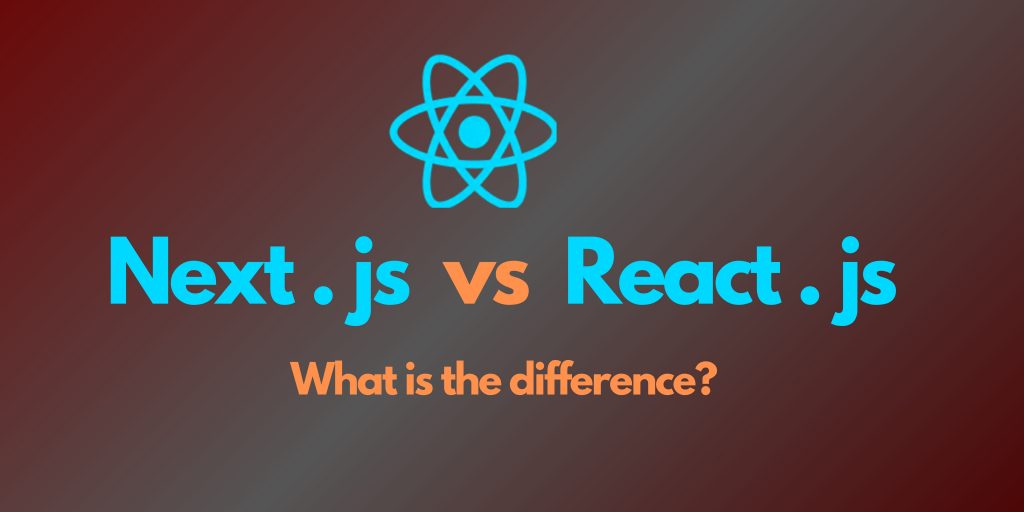It is unveiling the Ultimate Tech Showdown, Next.js vs. React. Get ready for a spectacle of technological prowess as we bring you the electrifying clash between Next.js and React. This battle of the Titans has been brewing, captivating the attention of developers, innovators, and tech enthusiasts. Both contenders come armed with their own set of weapons – Next.js with its dynamic server-side rendering and React with its robust component-based architecture. As the tension mounts, we’re about to witness a head-to-head duel in deciding which technology prevails in shaping the future of modern web applications. So, sit back and prepare to witness the unfolding saga of Next.js vs. React, where cutting-edge innovation meets fierce competition.
Decoding React: Unveiling the Essence of Web Mastery
Picture this, A dynamic web universe where user interfaces come to life with seamless interactivity. Enter React.js, the spellbinding sorcery that powers some of the most captivating web applications. At its core, React is a JavaScript library that dances with data, rendering captivating visuals and engaging interactions. It’s the secret ingredient behind those pixel-perfect UIs that captivate your senses.
With React, your web development journey transcends the ordinary. It’s a toolkit that empowers developers to create modular, reusable components, weaving them into intricate tapestries of code. Whether you’re crafting a cutting-edge app or breathing new life into an existing one, React’s declarative syntax lets you orchestrate the symphony of your digital canvas with elegance.
But that’s just the tip of the iceberg. React’s virtual DOM wizardry ensures lightning-fast performance, while its open-source community is a treasure trove of creativity and innovation. So, whether you’re a coding novice or a seasoned wizard, React beckons you to step into its realm and wield the power of modern web enchantment.
Advantages of React.js
Component-Based Architecture:
React.js is renowned for its component-based architecture, enabling developers to create modular and reusable UI components. This approach streamlines development, maintenance, and collaboration among teams.
Virtual DOM for Efficient Updates:
React.js employs a Virtual DOM, which efficiently updates only the parts of the actual DOM that have changed. This results in improved performance and a smoother user experience, even in complex applications.
One-Way Data Binding:
React.js implements one-way data binding, making it easier to manage and update data flow in applications. This unidirectional flow enhances predictability and reduces the chances of bugs caused by data inconsistencies.
-
JSX for Declarative UI:
JSX, a syntax extension for JavaScript, allows developers to write UI components in a declarative manner. This intuitive approach makes it simpler to visualize and understand the structure of the UI.
Strong Community and Ecosystem:
React.js boasts a vibrant and active community that contributes to a vast ecosystem of libraries, tools, and resources. This wealth of options facilitates integration with other technologies, quickens development, and addresses various needs.
Disadvantages of React.js
Steep Initial Setup for Beginners:
For newcomers to React.js, setting up the development environment, configuring tools, and understanding the project structure can be overwhelming, leading to a slower initial learning curve.
Flux Architecture Complexity:
While React.js provides the view layer, building complex applications often requires additional libraries and patterns for managing state. Implementing and understanding Flux architecture or other state management solutions can add complexity.
Frequent Updates and Deprecations:
The React.js library and its ecosystem evolve rapidly. While this signifies progress and new features, it can also lead to frequent updates and deprecations of APIs. Staying up-to-date can be challenging and may require ongoing maintenance.
Deciphering Next.js: Unveiling the Essence of Modern Web Alchemy
Imagine a world where web development transcends the ordinary, where every user interaction feels like a symphony of seamless experiences. Enter Next.js, the enigmatic realm where React’s magic is elevated to new heights. It’s not just a framework; it’s a portal to crafting web applications that blur the lines between reality and the digital realm.
Next.js is the architect behind server-side rendering, a technique that crafts web pages with lightning speed and impeccable SEO. It’s a technology that transforms your digital creations into living, breathing entities that respond in the blink of an eye. With Next.js, the performance is not just a feature; it’s an expectation.
But there’s more to this tale of technological marvel. As an open-source wonder, Next.js invites you to a community-driven wonderland where innovation knows no bounds. It’s a universe where developers join forces, creating powerful tools and plugins that enhance your journey into the unknown.
So, as you step into the world of Next.js, be prepared to embrace a new reality where web development becomes a seamless dance between code and creativity. It’s a journey that promises to reshape the way you view and craft digital experiences, propelling you into a future where the ordinary gives way to the extraordinary.
Advantages of Next.js
Effortless Server-Side Rendering (SSR):
Next.js offers built-in support for server-side rendering, which enhances initial page loading times and boosts search engine optimization. This feature ensures that the first impression of your website is fast and seamless.
Optimized Performance:
With features like automatic code splitting and prefetching, Next.js optimizes the loading of assets and improves overall performance. Users experience faster navigation between pages, leading to a smoother browsing experience.
Simplified Routing:
Next.js simplifies routing by offering an intuitive file-based routing system. Developers can create pages by simply adding files to the “pages” directory, reducing the complexity of managing routes.
Static Site Generation (SSG):
Next.js supports static site generation, allowing you to pre-render pages at build time. This results in lightning-fast page loads and reduced server load, making it an excellent choice for content-heavy websites.
Rich Ecosystem and Documentation:
Next.js benefits from a strong developer community and comprehensive documentation. This resourceful ecosystem offers various plugins, libraries, and examples that streamline development and troubleshooting.
Disadvantages of Next.js
Learning Curve for Complex Applications:
While Next.js is designed to simplify server-side rendering and routing, it might have a steeper learning curve for developers new to its concepts. More intricate projects could involve mastering advanced features, which may take time.
Limited Server-Side Rendering Control:
Next.js abstracts much of the server-side rendering process to simplify development. However, this can limit fine-tuning and customization options for applications with unique rendering requirements.
Initial Loading Overhead:
Due to server-side rendering and additional features, Next.js applications can experience slightly longer initial loading times compared to client-side-rendered applications. This overhead might impact user experience on slower networks.
Distinguishing React from Next.js: Unraveling the Thread

Performance:
When it comes to performance, both Next.js and React have their strengths. React, as a JavaScript library, is renowned for building dynamic and interactive user interfaces, while Next.js, being a framework built on top of React, adds server-side rendering and other optimizations that can enhance the initial loading speed of web applications.
Documentation:
Clear and comprehensive documentation is essential for developers. React offers extensive documentation that covers its concepts, components, and APIs. Next.js, as an extension of React, has its own dedicated documentation that elaborates on its unique features and how to utilize them effectively.
Server-side Rendering:
A standout feature of Next.js is its built-in server-side rendering (SSR), which empowers developers to render pages on the server before delivering them to the client. This can lead to improved performance, faster initial loading times, and better search engine optimization (SEO) compared to traditional client-side rendering in React.
Developer Community:
React boasts a massive and active developer community due to its popularity and longevity. While Next.js is a more specialized tool, it also has a growing community of developers who appreciate its capabilities for server-side rendering and optimized performance.
Configuration:
React requires developers to set up their own build tools and configurations, which can be daunting for beginners. In contrast, Next.js provides a structured configuration out of the box, making it easier to start building applications without getting bogged down in complex setup.
Maintenance:
Maintaining a web application can be challenging. Next.js, with its standardized architecture, simplifies the maintenance process. React applications, on the other hand, might require additional effort to manage configurations and performance optimizations.
TypeScript:
TypeScript is a popular choice for adding static typing to JavaScript projects. Both React and Next.js can be used with TypeScript, allowing developers to catch type-related errors and enhance code quality.
Development Cost:
The development cost can vary based on the project’s complexity and the developers’ expertise. While both React and Next.js are open-source and free to use, Next.js’s streamlined setup for server-side rendering might save development time and cost.
Experienced Developers:
Hiring developers experienced in React is relatively easy due to its widespread use. However, finding developers with expertise in both React and Next.js might be slightly more specialized.
Features:
React offers the core features for building dynamic user interfaces. Next.js, as a framework, extends these capabilities with features like server-side rendering, static site generation, routing, and automatic code splitting, making it an excellent choice for building optimized and performant web applications.
Next.js vs React.js: Making the Ultimate Choice for Your Web Journey

Deciding between Next.js and React.js is like choosing between two remarkable tools in a craftsman’s workshop. Each has its own unique strengths and attributes, making the choice akin to selecting the perfect brushstroke for your artistic masterpiece. While React.js forms the foundation, allowing you to create intricate designs with precision, Next.js adds layers of functionality, transforming your creation into a dynamic, multi-dimensional experience.
Here’s a strategic approach to help you make an informed decision:
Understand Project Goals:
Begin by defining the objectives and scope of your project. Determine if you need a static website, dynamic web app, or hybrid solution, as this will impact your choice.
Performance Needs:
Evaluate the performance demands of your project. If you require server-side rendering (SSR) or better SEO performance, Next.js might be more suitable. If performance isn’t a primary concern, React.js could suffice.
Complexity of UI:
Consider the complexity of your user interface. If you’re building a complex single-page application (SPA), React.js provides fine-grained control. For simpler projects or static content, Next.js offers a streamlined approach.
Learning Curve:
Assess your team’s familiarity with React and Next.js. If your team is already experienced in React, transitioning to Next.js might be smoother. If you’re starting from scratch, React.js might offer a gentler learning curve.
SEO and SSR:
Determine if search engine optimization (SEO) and server-side rendering are crucial. Next.js excels in this area, allowing search engines to index your content more effectively.
Ecosystem and Libraries:
Explore the libraries and tools available for both Next.js and React.js. Consider if there are specific libraries you need for your project and how well they integrate with each framework.
Community and Support:
Research the community engagement and support for both frameworks. An active community can provide resources, tutorials, and solutions to challenges you might encounter.
Scalability:
Envision the future scalability of your project. If you anticipate rapid growth and a need for extensive server-side rendering, Next.js might be better equipped to handle it.
Development Speed:
If you’re aiming for rapid development and deployment, Next.js’s built-in features can save time. React.js might require more manual configuration.
Budget and Timeline:
Consider your project’s budget and timeline. If you’re looking to expedite development and launch, Next.js’s SSR capabilities might speed up the process.
Client Expectations:
Understand your client’s expectations and requirements. If they prioritize performance, SEO, and dynamic experiences, Next.js might align better.
Conclusion
In the grand arena of web development, the showdown between React.js and Next.js is both a captivating spectacle and an important decision-making process. As you stand at the crossroads of these two technological giants, remember that your choice holds the key to shaping digital experiences that captivate and engage. Choosing between React.js and Next.js is not just about selecting tools; it’s a reflection of your creative philosophy and your commitment to excellence.
React.js provides the sturdy foundation, enabling you to mold intricate designs with precision and finesse. On the other hand, Next.js adds layers of functionality, transforming your creation into a dynamic, multi-dimensional experience that beckons users to explore further. This is the juncture where technology meets artistry, where innovation meets execution.
Your project is an evolving canvas, ready to receive your strokes of genius. The masterpiece you envision can find its home in both React.js and Next.js, each offering a palette of possibilities. So, as you embark on your journey of creation, remember that the tools you choose are more than lines of code—they are the conduits of your digital dreams. Choose wisely, and let your imagination weave harmoniously with technology to craft experiences that stand the test of time.


























